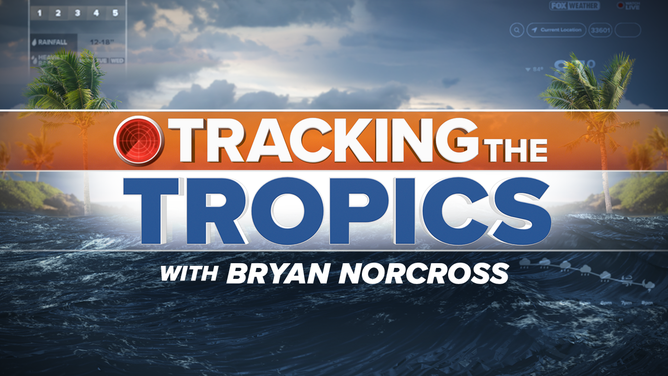Hurricane Ian to make final assault on Carolina coast with flooding rain, damaging wind
Hurricane Ian is a disheveled-looking system because it has evolved into a hybrid tropical and northern-type system on its trek from Florida. The cold rain over the Southeast is a sign of the dual characteristics of the system. But don’t be fooled. The rain, storm surge, and wind threats are all the same if it were purely a tropical system.

The podcast Tracking the Tropics with Bryan Norcross is now available to stream.
(FOX Weather)
Updated at 8:30 a.m. Eastern
Damaging winds and life-taking storm surge are heading to the South Carolina coast this morning. More torrential rain will come with the peak winds around landfall. Unfortunately, the timing of the arrival of the maximum impacts from Hurricane Ian will be around midday – coincident with the time of high tide along the Carolina coast.
Hurricane Ian is a disheveled-looking system because it has evolved into a hybrid tropical and northern-type system on its trek from Florida. The cold rain over the Southeast is a sign of the dual characteristics of the system. But don’t be fooled. The rain, storm surge, and wind threats are all the same if it were purely a tropical system.
Extreme danger will arrive with high tide late this morning. The tide swing on the South Carolina coast is 4 to 5 feet with no hurricane in the picture. The peak will arrive at about 11:30 a.m. At approximately that time, an extra 6 feet or so of tide level will be generated by Ian – which is the storm surge. Waves will ride on top of the surge. This combination will be unsurvivable in low-lying areas near the beaches or near waterways connected to the ocean.

(FOX Weather)
The highest surge will occur to the right of where Ian’s center of circulation comes ashore. If it makes landfall south of the entrance to Charleston Harbor, water will rise in the major parts of the city, including the historic district near the Battery, which frequently floods at high tide in modern times. The offshore islands would also be threatened.
If the center goes to the north of Charleston, McClellanville, Georgetown, and possibly the Grand Strand at Myrtle Beach would be the focus of the surge, even inland up the rivers. Full hurricane precautions are required in all these areas.
Many parallels have been drawn to Hurricane Hugo in 1989, but this is no Hugo, even though the track over the Low Country appears similar. This storm is much weaker and somewhat smaller, though the impacts can still be deadly.
The highest threat for significant wind damage is in a wide belt through the Low Country, which is very flat. Damaging winds will gust well over hurricane force. Once the storm moves well away from the ocean, the winds will quickly die down.
Even without the wind, torrential tropical rain will push into the higher terrain in the Carolinas and Virginia. A wide area is under a "Very Likely Flash Flood Threat."
Today is the day to stay informed and out of harm’s way. Many people will face multiple hazards. Use extreme care.
Elsewhere in the Atlantic, the National Hurricane Center is making note of a system off Africa that has a decent chance to develop. There is no sign that it will be a problem on our side of the ocean, although we have to stay vigilant for another month.
FOX Weather Hurricane Specialist Bryan Norcross has a podcast, Tracking the Tropics with Bryan Norcross, available now on FOX News Audio. You can get it on your device by clicking here.